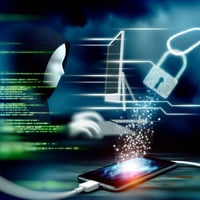Details of the security breach Recently, Twilio Authy experienced a security breach which has...
Healthcare Ransomware Attack: Compromised Credentials and no MFA
This is a repost of the following article from TechCrunch
Change Healthcare hackers broke in using stolen credentials — and no MFA, says UHG CEO

The ransomware gang that hacked into U.S. health tech giant Change Healthcare used a set of stolen credentials to remotely access the company’s systems that weren’t protected by multifactor authentication (MFA), according to the chief executive of its parent company, UnitedHealth Group (UHG).
The ransomware gang that hacked into U.S. health tech giant Change Healthcare used a set of stolen credentials to remotely access the company’s systems that weren’t protected by multifactor authentication (MFA), according to the chief executive of its parent company, UnitedHealth Group (UHG).
Understanding Healthcare Ransomware Attacks
UnitedHealth CEO Andrew Witty provided the written testimony ahead of a House subcommittee hearing on Wednesday into the February ransomware attack that caused months of disruption across the U.S. healthcare system.
This is the first time the health insurance giant has given an assessment of how hackers broke into Change Healthcare’s systems, during which massive amounts of health data were exfiltrated from its systems. UnitedHealth said last week that the hackers stole health data on a “substantial proportion of people in America.”
Change Healthcare processes health insurance and billing claims for around half of all U.S. residents.
According to Witty’s testimony, the criminal hackers “used compromised credentials to remotely access a Change Healthcare Citrix portal.” Organizations like Change use Citrix software to let employees access their work computers remotely on their internal networks.
Witty did not elaborate on how the credentials were stolen. The Wall Street Journal first reported the hacker’s use of compromised credentials last week.
Importance of Multi-Factor Authentication in Healthcare
However, Witty did say the portal “did not have multifactor authentication,” which is a basic security feature that prevents the misuse of stolen passwords by requiring a second code sent to an employee’s trusted device, such as their phone. It’s not known why Change did not set up multifactor authentication on this system, but this will likely become a focus for investigators trying to understand potential deficiencies in the insurer’s systems.
“Once the threat actor gained access, they moved laterally within the systems in more sophisticated ways and exfiltrated data,” said Witty.
Witty said the hackers deployed ransomware nine days later on February 21, prompting the health giant to shut down its network to contain the breach.
UnitedHealth confirmed last week that the company paid a ransom to the hackers who claimed responsibility for the cyberattack and the subsequent theft of terabytes of stolen data. The hackers, known as RansomHub, are the second gang to lay claim to the data theft after posting a portion of the stolen data to the dark web and demanding a ransom to not sell the information.
UnitedHealth earlier this month said the ransomware attack cost it more than $870 million in the first quarter, in which the company made close to $100 billion in revenue.




